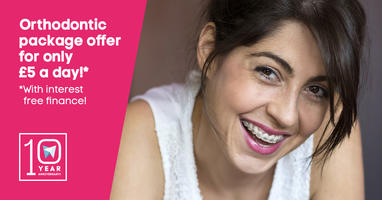In this series I would like to examine some of the problems that orthodontics are prescribed to correct, and to go into a little detail about what forms the treatment can take. This way patients can prepare themselves for orthodontic treatment and not be surprised or shocked when they find out what needs to happen in their mouths. In this segment, I intend to speak a little on crowding.
What Is Crowding?
Crowding occurs when the length of the arch is smaller than the combined width of the teeth that are on it. This means that the teeth are too close together and thus cannot be well aligned as they overlap into each others territory. Many other problems occur while crowding exists, such as overlapping, but torsion (a condition in which the tooth twists in the alveolus, causing it to stick out at an angle) and displacement (a condition in which the tooth is moved to a different position by another tooth) can also occur if the conditions are right. Crowding can cause teeth to break or fracture and it can also, if severe enough, cause teeth to die by moving them to far from the nerve and thus severing the tie it has with the nerve, resulting in the death of the tooth. Dead teeth will start to change color, eventually turning black and decaying inside the mouth.

What Can Be Done
The main two non-orthodontic ways to deal with this situation are either to make the space bigger and keep all of the teeth, or to extract some of the teeth to fit the space given. Which course of action is taken depends on how old the patient is, what kind of teeth they have, where the crowding is most serious, whether they still have their wisdom teeth or not, and a whole host of other things. Usually, though, these two instances are only used in extreme cases of crowding. Regular crowding can be treated with the help of just regular old orthodontry.
When the patient is quite young, or cannot get teeth extracted, the palate is enlarged using a palatal expander. These devices are part of the braces, and they enlarge the palate by pushing it apart. This sounds torturous but remember, the effect is reached over a long period of time, sometimes spanning into years, and so the procedure is relatively painless.
When there are too many teeth, extractions are frequently used. Old bones cannot expand easily, thus in adult patients extraction is almost always the choice. Aside from just getting teeth removed, the rest of the teeth are pulled in the direction of the gap, thus shifting in the alveolus and becoming more evenly spaced. This is a standard procedure, and should not be feared. Usually the canines or the front teeth next to the canines are pulled, as these are easy to replace. Molars are almost never pulled, because they are large, and are difficult to replace, though wisdom teeth are almost always pulled.

